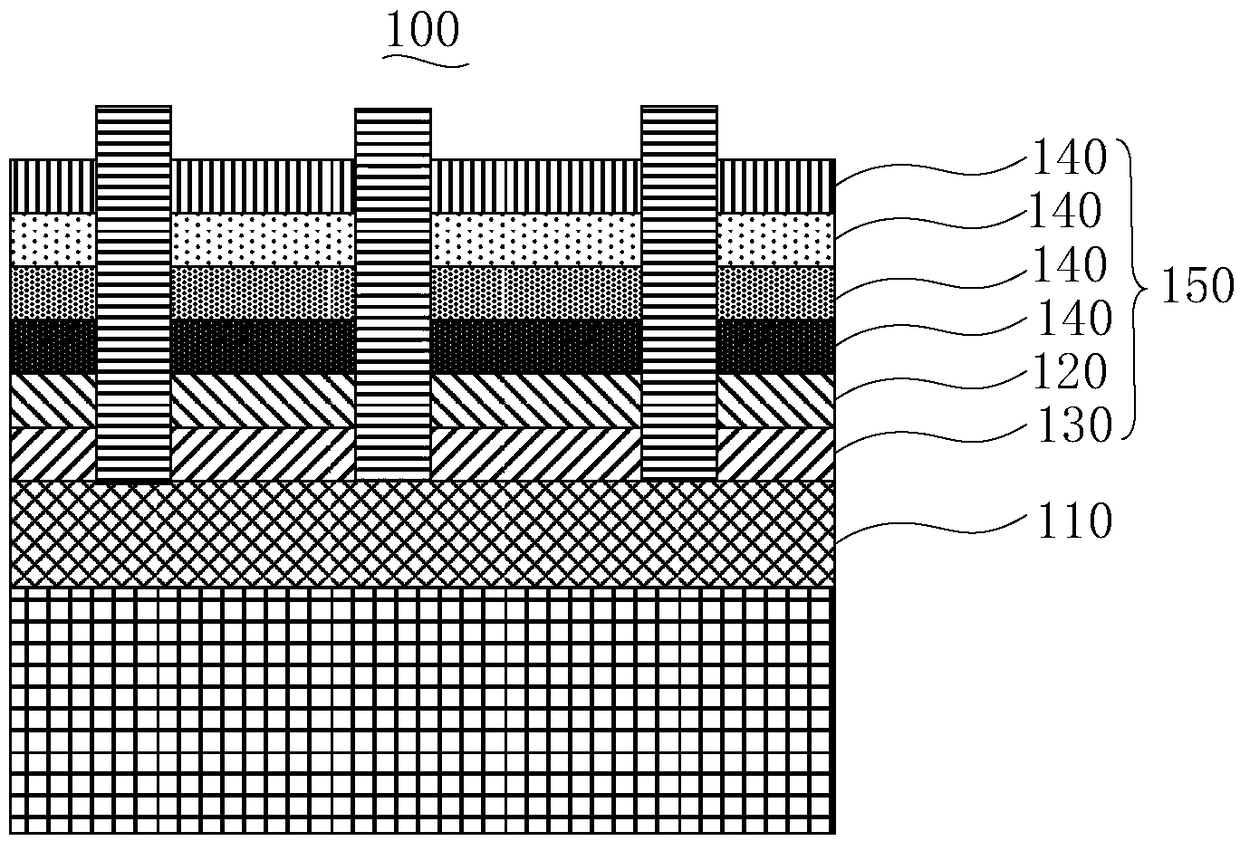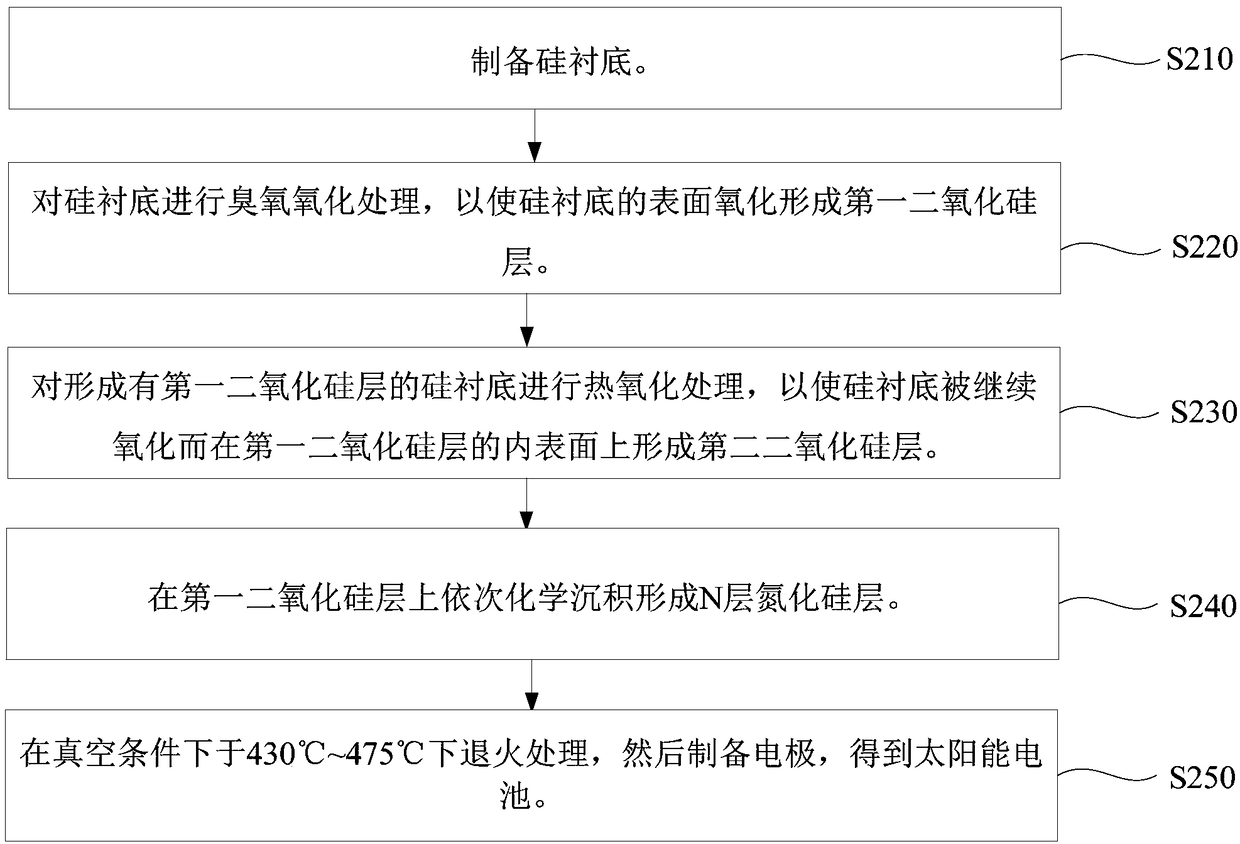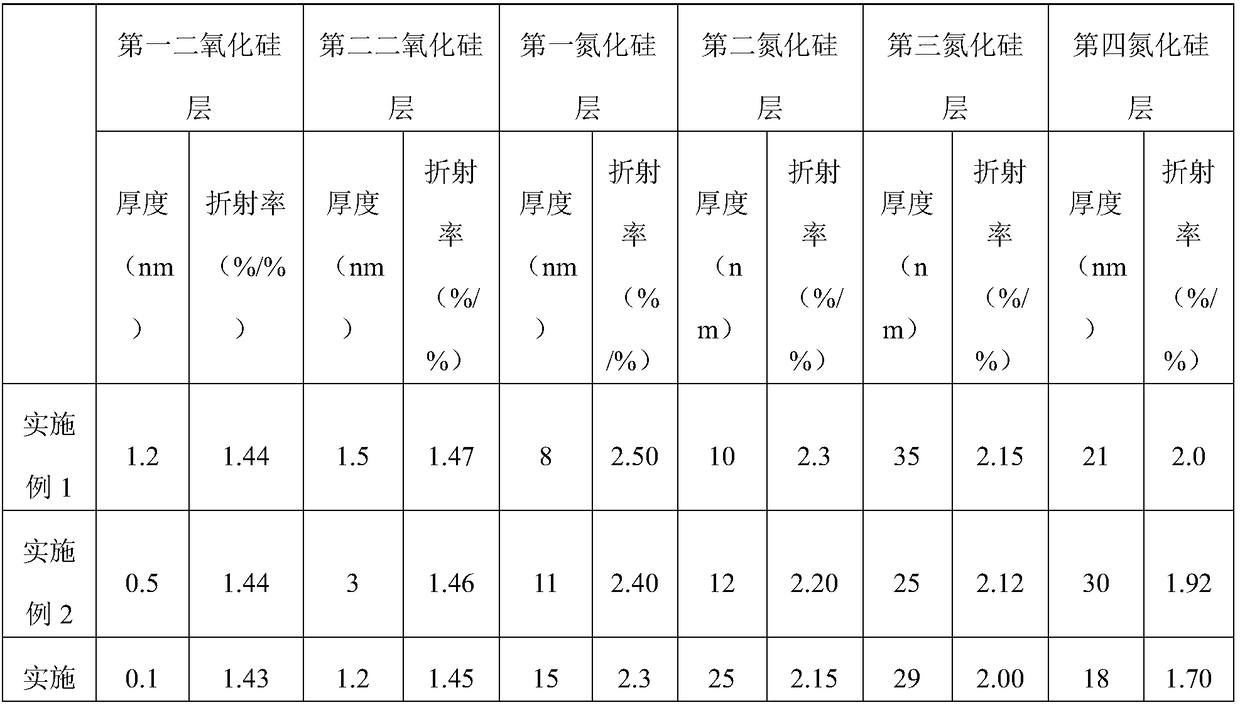Solar cell and preparation method and photovoltaic module thereof
A technology of solar cells and conditions, applied in the field of solar photovoltaic, can solve the problems of insufficient improvement effect and the like
- Summary
- Abstract
- Description
- Claims
- Application Information
AI Technical Summary
Problems solved by technology
Method used
Image
Examples
preparation example Construction
[0043] Such as figure 2 As shown, a method for preparing a solar cell according to an embodiment is a method for preparing the above-mentioned solar cell, and the method for preparing a solar cell includes the following steps:
[0044] Step S210: preparing a silicon substrate.
[0045] Specifically, the step of preparing the silicon substrate includes: cleaning the silicon wafer, and texturizing one surface of the silicon wafer to form a textured surface, then performing a diffusion treatment on the textured silicon wafer to form a PN junction, and then treating the silicon wafer Perform edge etching and remove the phosphosilicate glass layer, and obtain a silicon substrate after cleaning. That is, the silicon substrate is a silicon wafer formed with a PN junction. Wherein, the silicon wafer is monocrystalline silicon, polycrystalline silicon or quasi-crystalline silicon. Specifically, the silicon substrate is a P-type silicon wafer.
[0046] Step S220: performing ozone o...
Embodiment 1
[0082] The preparation process of the solar cell of the present embodiment is as follows:
[0083] (1) The original P-type polysilicon wafers cut by diamond wires are cleaned once with conventional hydrofluoric acid and nitric acid adding texturing additives to form a textured surface, and then the textured silicon wafers are subjected to diffusion treatment to form a PN junction. After edge etching and removal of phosphosilicate glass, it is cleaned to obtain a silicon substrate.
[0084] (2) Utilize an ozone generator to spray the silicon substrate through the spray plate to carry out ozone oxidation treatment, the ozone concentration is 0.3ppm, the distance of spraying is 2 millimeters, and the temperature is 25 ° C, so that the surface of the silicon substrate Can be oxidized to form a first silicon dioxide layer with a refractive index of 1.44 and a thickness of 1.2 nanometers. Wherein, it is the oxygen of 16slm that feeds flow in the ozone generator, and the nitrogen th...
Embodiment 2
[0096] The preparation process of the solar cell of the present embodiment is as follows:
[0097] (1) The original P-type polysilicon wafer cut by diamond wire is cleaned with conventional hydrofluoric acid and nitric acid to add texturing additives to form a textured surface, and then the textured silicon wafer is diffused to form a PN junction. After edge etching and removal of phosphosilicate glass, it is cleaned to obtain a silicon substrate.
[0098] (2) Utilize an ozone generator to spray the silicon substrate through a spray plate to carry out ozone oxidation treatment, the ozone concentration is 0.1ppm, the distance of spraying is 1 mm, and the temperature is 20°C, so that the surface of the silicon substrate Can be oxidized to form a first silicon dioxide layer with a refractive index of 1.44 and a thickness of 0.5 nm. Wherein, the oxygen gas with a flow rate of 1 slm and the nitrogen gas with a flow rate of 10 slm are used as protective gas through the ozone genera...
PUM
| Property | Measurement | Unit |
|---|---|---|
| Thickness | aaaaa | aaaaa |
| Thickness | aaaaa | aaaaa |
| Thickness | aaaaa | aaaaa |
Abstract
Description
Claims
Application Information
 Login to View More
Login to View More - R&D
- Intellectual Property
- Life Sciences
- Materials
- Tech Scout
- Unparalleled Data Quality
- Higher Quality Content
- 60% Fewer Hallucinations
Browse by: Latest US Patents, China's latest patents, Technical Efficacy Thesaurus, Application Domain, Technology Topic, Popular Technical Reports.
© 2025 PatSnap. All rights reserved.Legal|Privacy policy|Modern Slavery Act Transparency Statement|Sitemap|About US| Contact US: help@patsnap.com



